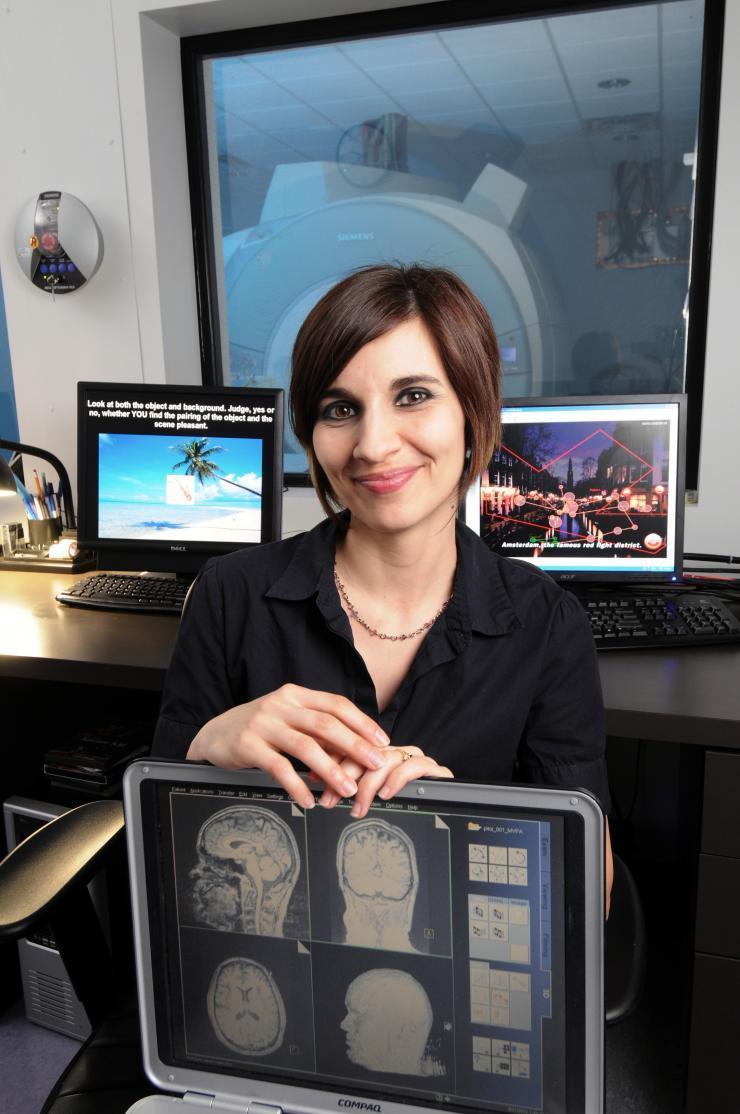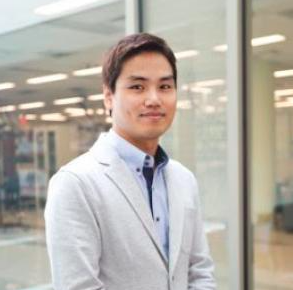Catching Z’s, Capturing Data: Researchers Create DIY Device for Monitoring Sleep Patterns
Aug 12, 2020 — Atlanta, GA

Audrey Duarte has spent most of her research career as a professor with the School of Psychology studying memory and aging. “It’s really my bread and butter,” Duarte says.
Soon, that research will focus on another aspect of daily — and nightly — life that changes as people grow older, in an area that often impacts their memory: sleep.
“When you start thinking about what is underlying memory changes and aging, and individual differences in memory ability, there are certain factors that you can look at that are malleable – health-related factors, and sleep is a huge one,” Duarte says.
The problem with gathering data from sleeping subjects is that many times, the devices that individuals have to wear can be cumbersome and make it difficult to attain a good night’s sleep. That can impact the quality of the data. That’s why Duarte is collaborating with assistant professor W. Hong Yeo, who researches micro and nano engineering in the George W. Woodruff School of Mechanical Engineering. Together, the team is creating a much smaller, wearable electronics device that can read brain waves while allowing the wearer to easily drift off into the various stages of sleep. That device may be ready for home testing soon, Yeo says.
Currently, Duarte and Yeo are working on two projects. One is supported by a National Institutes of Health grant, which aims to develop an at-home sleep monitoring system that measures brain signals on the forehead. This single device platform will be used to find neural signatures related to early detection of Alzheimer’s disease. The other project is supported by Huxley Medical Inc., a company Yeo founded, to build a low-cost, wireless, polysomnography system. Polysomnography describes a certain kind of sleep study that involves measuring brain waves, heart rates, and other vital signs to help health professionals understand sleep disorders.
Nanotechnology to the rescue
Making this new device affordable, easy to manufacture on a wide scale, and above all, wireless would allow patients to place the device on their foreheads, in the comfort of their own homes versus a visit to an in-person sleep lab.
Yeo says that nanotechnology helped him dream up a way to make the device small and unobtrusive enough that test subjects can forget they’re wearing a monitor.
“Basically, we will develop a new nanomanufacturing method that can print multiple nanomaterials to fabricate an integrated wireless sensor system,” Yeo says. “Overall, this device will have an exceptionally small form factor,” with a thickness less than five millimeters that weighs less than eight grams. “The device size is similar to or smaller than a credit card.”
The soft electronics, mounted on a patient’s forehead, will include multiple sensors to measure brain signals, as well as a Bluetooth circuit. “It's basically offering the similar wireless functionality as an Apple watch, such that this device can be connected with any smartphone or tablet to record brain signals up to 20 meters away from the device,” Yeo says.
Waking up to a new way to monitor sleep
The team’s project started in 2019 when Yeo contacted Duarte about his need to access a lab that measures electroencephalograms (EEGs), which show the electrical activity in the brain. Yeo wanted to check a different device he was working on, and Duarte says the connection led to thinking about other possible collaborations.
“I saw the potential right away,” she says, sharing that Yeo’s previous nanotechnology work grabbed her attention. “We just started talking when I saw what he was building.”
Yeo focuses on “soft, wearable electronics for health monitoring and human-computer interfaces,” according to his research website. He has previously designed biomimetic materials, or “skin-like electronics.” One of his device proposals, placed under the chins of those with dysphagia, or difficulty swallowing, would read electronic impulses to the throat, and is designed to help patients learn how to swallow again. Another project uses ultra-thin membrane biosensors that could help patients wirelessly control robotic wheelchairs.
“His devices, you forget they’re on,” Duarte says of the designs. And “they really send out high quality signals that you can record.”
She adds that while devices that monitor movements during sleep currently exist, “and you can learn things about sleep-wake cycles — it’s objective data, but it’s not brain activity. There were all of these reasons why I wanted to get to brain activity.”
The sleep-memory-health connection
Duarte explains that science has long known about the connection between memory and sleep. “Looking at brain activity when people are sleeping, you can see patterns of activities related to memory. Events we experience during the day are replaying during sleep, and memories can be strengthened.”
Consistent nights of good sleep can translate into health benefits like stronger immune systems and better cardiovascular health, along with improved memory, Duarte adds.
She shares that Alzheimer’s patients are the subject of an unrelated sleep study. “There could be some things in sleep brain activities that serve as biomarkers of Alzheimer’s pathology,” she says. If that can be verified, a smaller sleep monitoring device could keep patients from requiring more invasive procedures like spinal taps or brain scans. “They could just wear this device at home.”
Both Duarte and Yeo say the Covid-19 pandemic has rearranged their testing schedule for the device. Test subjects, including older people, can’t come in to labs to try out the device and have their data taken, but the researchers say they are getting ready to send them out for home testing.
“Due to Covid-19, overall progress is slow,” Yeo says. “However, we’ve made progress in device design and fabrication. I believe that we can start using one or two devices with human subjects in late August.”
“After we’re sure we have a design that’s high fidelity and doesn’t break easily, we’re going to start mailing it out to volunteers of different ages,” Duarte says. And with video chat platforms like “Blue Jeans or Zoom, we can answer questions as they’re placing it on their heads.”
Yeo is founder and shareholder of Huxley Medical, the company sponsoring this research. He is also an inventor of technologies that include wearable electronics for health monitoring, which Huxley licensed for commercialization. The outcome of this research could impact his personal financial interests. His financial conflicts of interest have been disclosed to and are managed by the Georgia Institute of Technology Office of Research Integrity Assurance.



Renay San Miguel
Communications Officer
College of Sciences
404-894-5209




